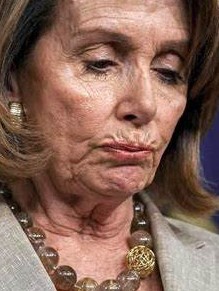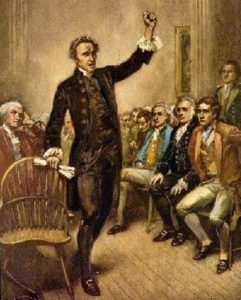These observations and opinions are the result of considerable thought on how we are facing the challenge of the Chinese Virus.
I’VE BEEN THINKING ABOUT THE VIRUS and aspects surrounding the outbreak, because my life away for my computer, primarily golf, has been restricted.
I have been doing extensive research on past emergencies, while keeping an ear to the latest news of our current war against the Chinese Virus.
When the H1N1 (Swine Flu) pandemic of 2009-2010 hit us, the nation didn’t come to halt with the cancellation of sporting and other cultural events. President Barack Obama didn’t declare an emergency until six months after it was detected in the U.S., after 1,000 deaths had been recorded. There were no travel bans, however, the State Department, under Hillary Clinton, recommended citizens avoid non-essential travel to Mexico.
On April 24, 2009, nearly a month after the first cases were reported in California and began to spread to Texas and New York, an official in the White House stated, “The president has been fully briefed.”
“We are closely monitoring the emerging cases of swine flu,” said President Obama, “This is obviously a cause for concern … but it is not a cause for alarm.” All while CNN was reporting 800 deaths in the U.S. due to normal influenza, higher than the combined worldwide death toll for swine flu.
I FOUND IT INTERESTING that Kathleen Sebelius, Obama’s nominee for Secretary of Health and Human Services, was still awaiting confirmation, and that he had not yet made appointments of individuals to head the FDA, CDC or Surgeon General during the first month of the outbreak.
A week after Sebelius’ confirmation at HHS, she stated that school closures for single confirmed cases of H1N1 influenza were unnecessary, but that parents could keep their child home if he or she displays an influenza-like illness.
And testing kits weren’t made available to all states by the CDC until May 6, 2009, more than a month after the first detections of the Swine Flu. Hmmmmm.
FLASHBACK – How many of you recall what it was like when 12,469 citizens died from H1N1 in 2009-2010; it wasn’t that long ago. How about the 61,200 who died during the 2018-2019 flu season or the 79,400 who died during the 2017-2018 season.
As I write this, there have been 499 deaths in the U.S. due to the Coronavirus. Congress has passed legislation of $8.3 billion to address the outbreak, and when the president declared a national emergency, an additional $40 billion became available to him. I will give you my thoughts below on the current effort to pass a bipartisan bill to aid Americans estimated to exceed $1 trillion.
MY PRIMARY CONCERN is the move toward a national quarantine. What’s right for New York, California and Illinois – and it may not be – is not necessarily right for Arizona or Texas. I wonder, for instance, what would happen to the people of Boerne, Texas if they were told they had to shelter in place until further notice? We need not apply the same shelter in place policies for every jurisdiction.
“In New York State, we do not understand the logic, beyond mere political calculus, for imposing the same burdens on the already poor towns of the Adirondacks,” comments the editor of the blog Blueberry Town.
While conceding that New York City is different, with its “cheek-by-jowl restaurant tables and terribly crowded sidewalks,” the editor states, “We are doing enough damage to the economy as it is without doing more that is necessary by treating everywhere, even everywhere in New York State, as if it were the Times Square subway station.
“Poverty kills as surely as Covid-19, and it may be the one thing we are producing as fast as virus particles.” – Blueberry Town
While the president is working closely with Governors Andrew Cuomo and Gavin Newsom, he has, so far, ruled out the option of a national quarantine. I certainly hope he doesn’t weaken on the issue.
“Governors Cuomo and Newsom are following a strategy of economic disaster,” Newt Gingrich believes. And I agree. “This kind of overreaction runs real risk of tipping us not into a recession, but a depression. There are 335 million Americans. We have to find a strategy that lets us distinguish the healthy from the at risk.”
“The Coronavirus has unleashed a massive economic shock on the U.S. and the world,” the Wall Street Journal recently reported. “It began with disruptions to supply chains and restrictions on travel and is now rapidly expanding via spontaneous and government-imposed ‘social distancing’ measures such as closing schools and confining regional populations to their homes.
“Entire industries are shutting down. It is a sudden stop to the global economy. There is no clear historical precedent for the scale and nature of this shock.
“Governments and the public always face a trade-off between economic stability (money in their pockets and 401ks) and public health and safety. The bigger the near-term cost to the economy, and vice versa.
“We have learned that we need to prioritize speed, think in the trenches, be visible and worry about how to pay for it later. If you wait to craft the perfect response, you’ll have lost valuable time and you’ll miss something no matter what.”
With that last thought in mind, I remind you of the negotiations taking place in Congress to settle on a “real pay for it later” bill that will probably exceed a trillion dollars. President Trump has stated that the health and well-being of the public has priority over the debt.
Having read some of the details that may become part of the virus aid bill, I find it undesirable as a small government person, but no doubt it’s needed at this time. I understand that most of the provisions, including the business loans to keep them running with jobs, will expire on December 31, 2020, when the crisis will hopefully be behind us.
While the opposition has criticized the president for giving the public “false hope,” he has become known as our “Encourager-in-Chief,” reminding us that “we’re all one beautiful, big American family” addressing this issue.
On March 16, 2020, the White House Coronavirus Task Force issued its “15 Days to Slow the Spread” guidelines, which they believe will have a resounding impact on public health. It brings together government resources and private-sector ingenuity.
It’s important that those who have been inclined to “ho hum” these guidelines, like the spring break crowd who flocked to Florida’s beaches, because if the statistics are not favorable after 15 days, the president may be persuaded to call for a national quarantine. That would be disastrous.
I’M OPTIMISTIC that President Trump will not agree to a national lockdown or quarantine. Shorty before midnight on Sunday, he tweeted, in all caps for emphasis: “WE CANNOT LET THE CURE BE WORSE THAN THE PROBLEM ITSELF. AT THE END OF THE 15 DAY PERIOD WE WILL MAKE A DECISION AS TO WHICH WAY WE WANT TO GO.
DEMOCRATS ARE BLOCKING AID to businesses who have closed and their furloughed or laid-off employees, and to aid hospitals and other medical care facilities. The New York Times was again caught changing its headlines to absolve the Democrat Party of blame. The paper’s initial headline, “Democrats Block Action on Stimulus Plan, Seeking Worker Protections,” was changed to “Partisan Divide Threatens Deal on Rescue Bill.” Oops.
While the Nancy Pelosi flew back from California with her own plan, that included items that had nothing to do with virus relief – emissions control over the airlines, same-day voter registration, corporate board diversity, solar panel benefits, and debt relief for the Postal Department – she colluded with Chuck Schumer to block a vote Monday. She should be ashamed.
After being blocked by Schumer to speak on the floor of the Senate, Maine’s Susan Collins said “I cannot believe that the answer to this crisis as we move to address the economic consequences that are so severe for the people of this country that the answer from our friends on the other side of the aisle is delay, delay, delay. No sense of urgency. No hurry.”
Commenting on Schumer’s objection that she be permitted to speak earlier, she said, “Is that we’ve come to?”
The Republican Sen. John Kennedy of Louisiana said, “Do you know what the American people are thinking right now? They’re thinking, that this country was founded by geniuses, but it’s being run by a bunch of idiots.”
Meanwhile, Senate Majority Leader Mitch McConnell continues to work the virus relief bill in his effort bring it to a floor vote.
FINALLY, Apology Joe Biden continues to provide laughs as he strives to be relevant. In an attempt to praise governors for their response to the pandemic, he referred to Massachusetts Gov. Charlie Baker as “Charlie Parker.”
REMEMBERING the anniversary of Patrick Henry’s “Liberty or Death” speech before the Second Virginia Convention on March 23, 1775. “Almighty God,” he said, “I know not what course others may take, but for me, give me liberty or give me death!”
May God continue to bless the United States of America.







